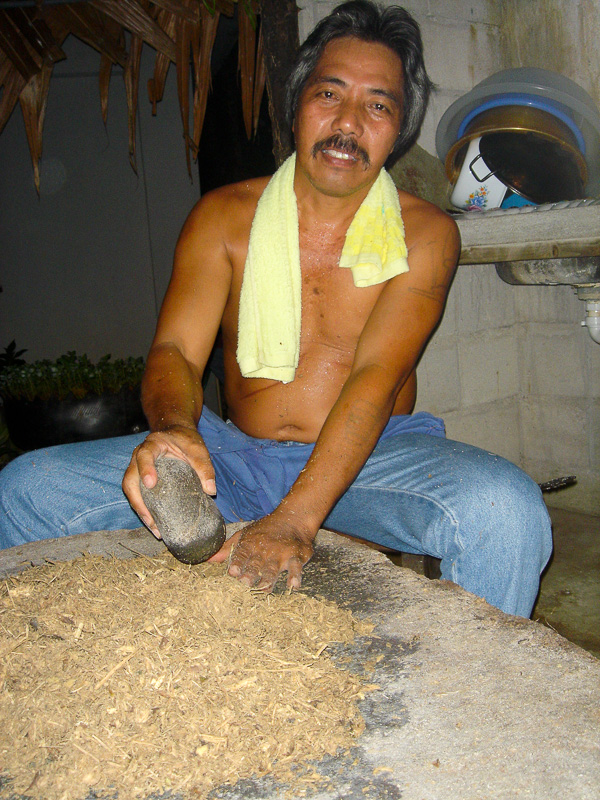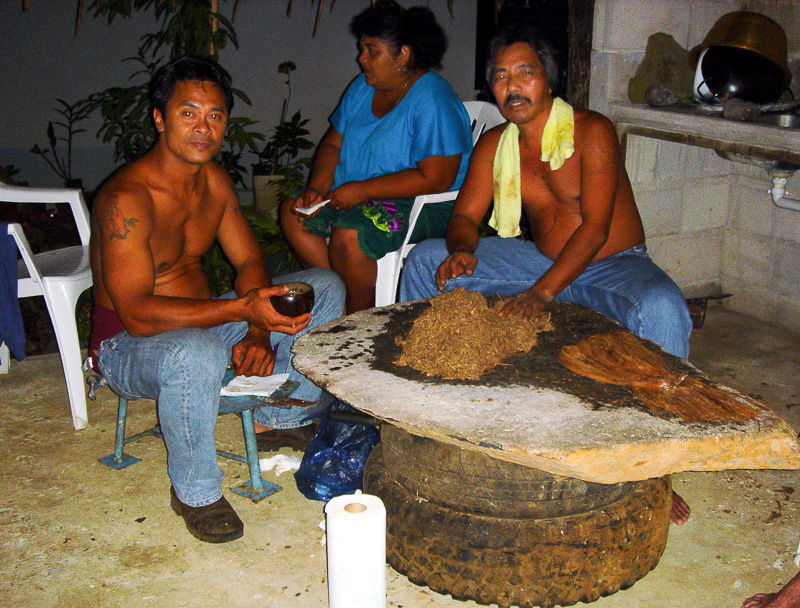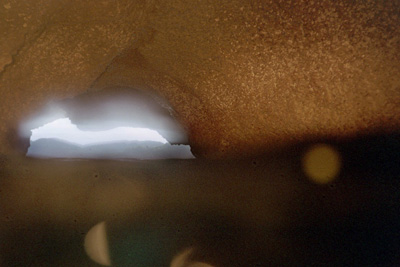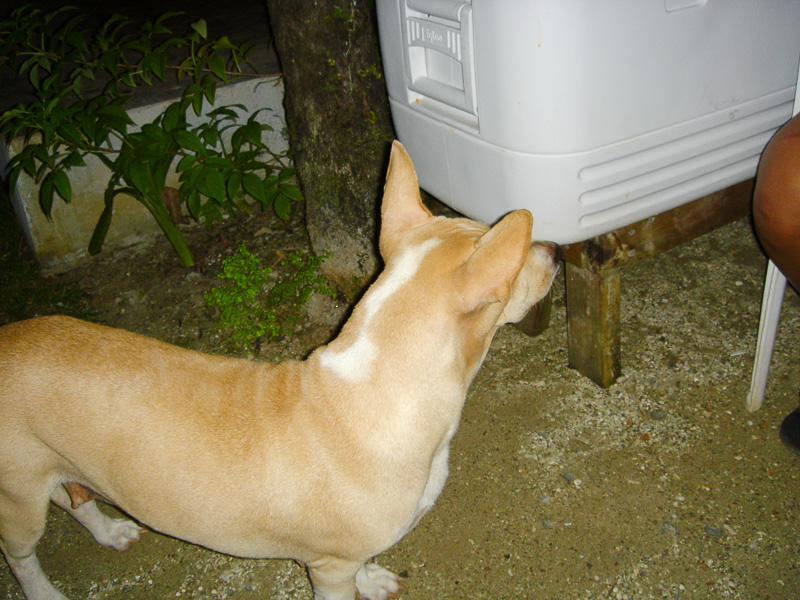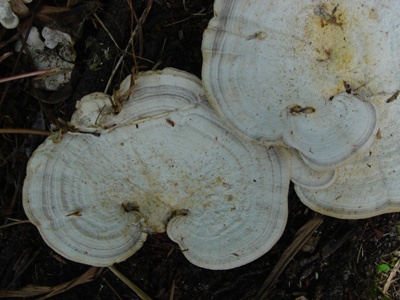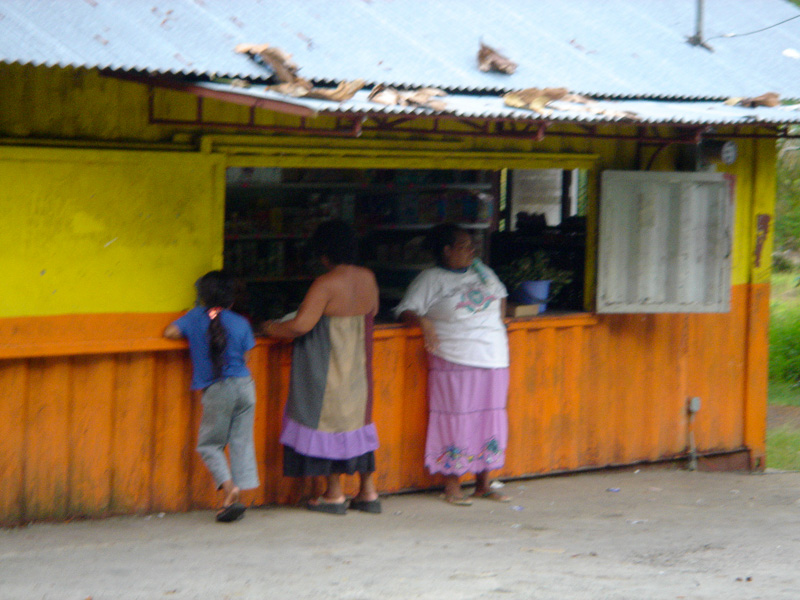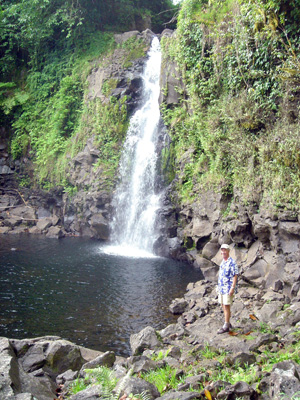We drove around the whole island of Pohnpei today. It was fun, though I felt anxious about not squeezing enough nature in, it's a bit of a downer to be in a car and I was in the car a fair amount yesterday. The green jungle mountains of the interior beckon, I guess I'm not really going to get very deep in there. One practical problem with land excursions is that if you walk more than half an hour in this intense humidity and heat, you're limp with exhaustion.
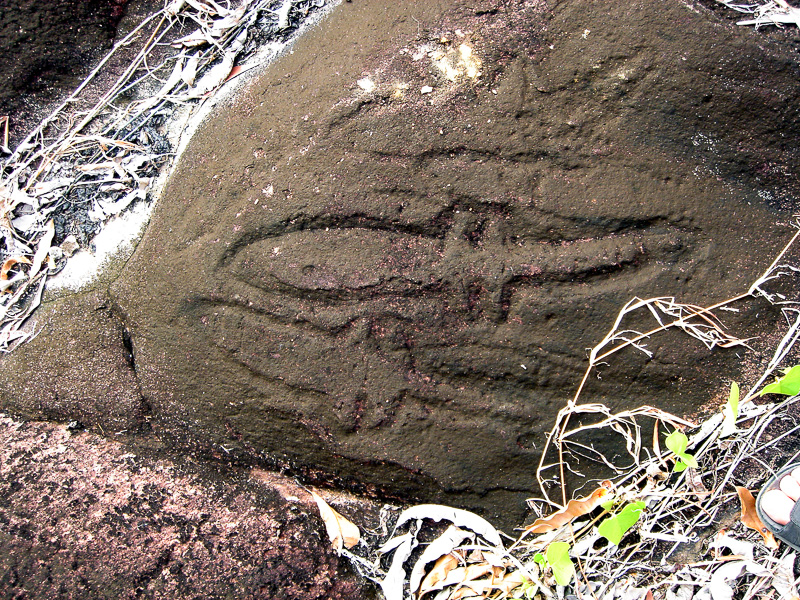
It was exceedingly hard to find the sights confidently enumerated in a booklet I got at the Pohnpei Tourism office. Despite what the booklet says, there are no road signs of any sort whatsoever. Not a single road is marked in any way. And the booklet is always, like, “turn at the Nan Midol sign.” The island isn't set up for tourists, it's set up for the people who live there. Maybe they took the signs down because they're rebuilding the roads. The People's Republic of China sprung for a new road all the way around Pohnpei, Embry says the PRC is giving lots of aid to tiny countries to help their standing in the votes at the UN.
In any case, you have to stop and ask questions over and over, and it's fun at first to talk to the islanders, but after awhile you begin to feel like an idiot, like the annoying three-foot-tall green alien from the UFO, and for that matter, the islanders don't necessarily like giving out information, it could be that they like to hoard their info, as they don't have many possessions. They're friendly enough, but sometimes they burst into laughter at you, all white and oddly dressed and solemn, and it can get embarrassing.
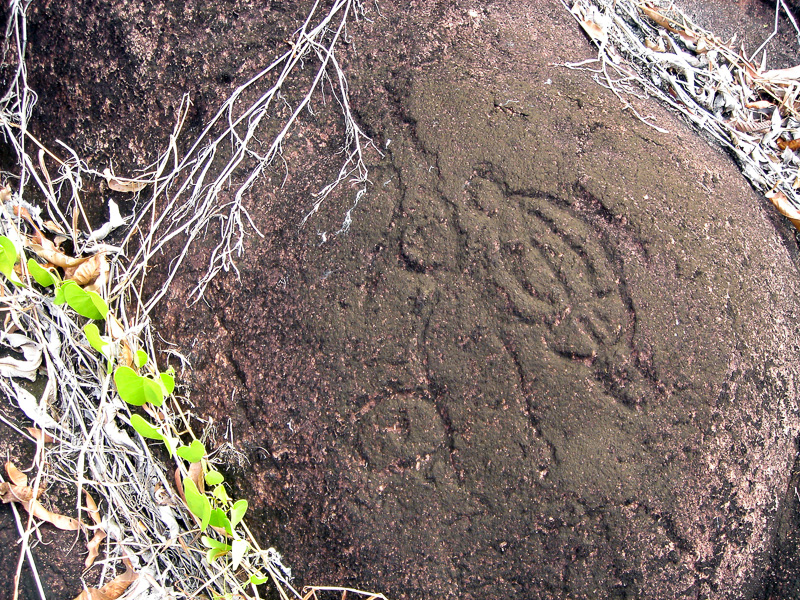
Anyway after asking seven or eight people, we found our way to an enormous rock, smooth to the feet, a hundred feet long, in the jungle beside an open field with green interior mountains beyond, heartbreakingly beautiful tree crowns against the pale blue sky. The rock is covered with petroglyphs, more or less like in Hawaii, designs carved into the rock, quite old, images of paddles or knives, perhaps a woman's vagina or a shield, some bow-tie shapes, the outline of a whole woman. To find this site we'd asked at a house near it and a betel-nut-chewing guy offered to guide us and we were glad to have him along for a few bucks. Wiley. He banged one spot on the big rock and it sounded a bit hollow and he said, “There is a door in the rock here, and the brothers went inside.” What brothers? “Two brothers came from far away — ” he points to the other side of the island across the interior mountains, maybe ten miles away. “From Kiti. They made these carvings. A giant came, and they hid inside the rock. See here, it's a picture of a lock and a key.”
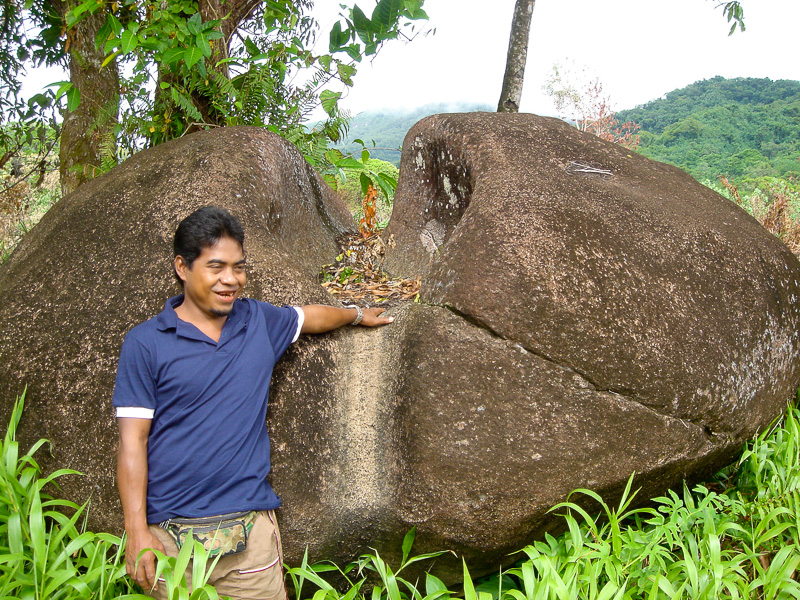
I told him Embry and I were brothers, and then a little later I told him we were from Kiti, which got a good laugh out of him. It was fun to think of Embry and me as archetypes, as from a legend. Then in a field nearby Wiley showed us a “woman rock” which had a crotch and slit like a vagina, really quite graphic. He touched it for good luck, and I did too. Hoping to see my woman soon.

There were other boulders in the field, and Wiley said they were people too, he said this was his land, and the land was a storyboard, which is the name of a wooden bas relief comic strip of one or more frames that Micronesians carve to preserve legends, e.g. in the Yap airport there's a large storyboard showing three stages of the Yapese getting stone money from Palau. Wiley's rocky field is a storyboard, I love that. Living mythically and in depth.
We got lost again trying to find some Japanese cannons, stumbled upon a clearing in the jungle, a woman sitting there on her steps, two houses and a tiny graveyard with four raised mausoleums, perhaps her family's been in this tiny Eden for generations. She kindly showed us the way to the “sight.” It was like meeting Eve.
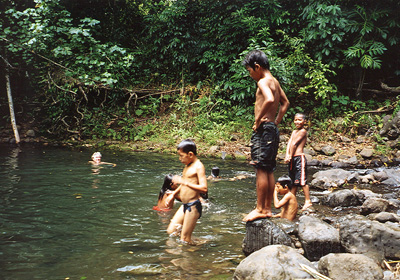
Later I swam in a pool in a river by the road with twenty small children. Their mothers were doing laundry the old-style way, beating the clothes with a stick on a rock. Kind of a fountain of youth. Embry just watched. Later I had a feeling the water had been none too clean, for surely there were many houses upstream from the pool.
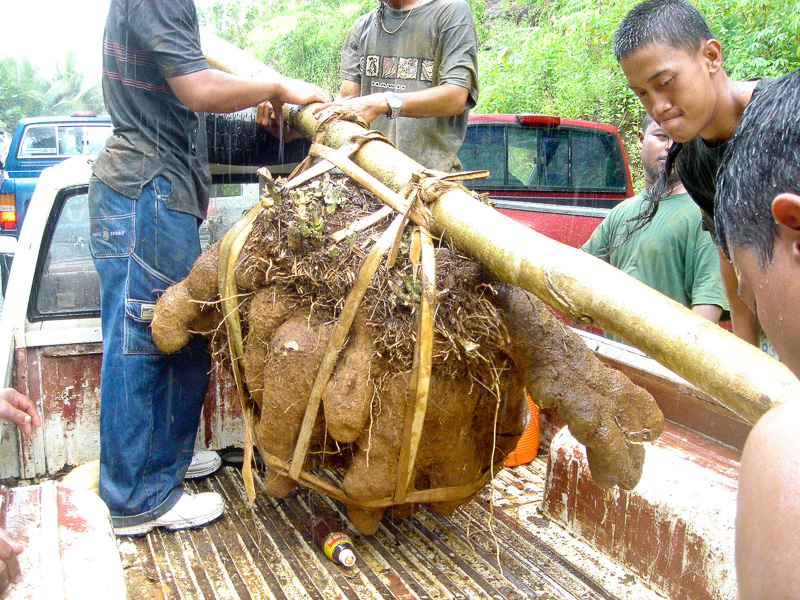
We encountered a huge traffic jam, cars parked on both sides of the road, creeping along. The pickup in front of us held some enormous ball of roots and dirt attached to a carrying-pole. It was raining, we were at a standstill, I studied the object, it seemed to be a bundle of linked tubers, finally I got out and asked the eight guys riding with it what it was. “A yam.” Pohnpei is known for producing enormous yams, and this yam must have been four hundred pounds, the eight guys could barely carry it, all of them straining at the pole. I'd visualized the giant yams as being oversized perfectly shaped individual supermarket-style yams, but this big fella was more of a lumpy gnarly cluster. As we inched closer to the center of the crowd I saw a pile of freshly slaughtered piglets, a mound of breadfruits, hundreds of natives, many of them carrying plastic plates with rice and roast pig. “Is it a feast?” I asked someone. “It's a funeral.”

All fascinating, but by the end of the day, I'm tired of being so white, so alien, so full of unanswered questions. It'll be good to get back to where I know what's going on.









